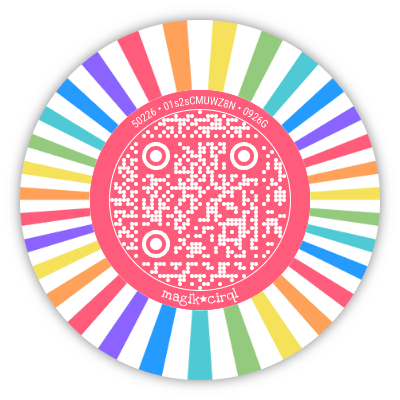QR Code Placement Strategy
Strategic Positioning for Maximum Visibility & Engagement
Master the art of strategic QR code placement. Learn how to position QR codes for optimal visibility, accessibility, and user engagement while seamlessly integrating them into user journeys and physical environments.
Strategic Placement Principles
These fundamental principles guide effective QR code placement to maximize visibility, accessibility, and user engagement across all environments.
Eye-Level Positioning
Position QR codes at natural eye level for comfortable scanning without strain.
- Place at 5-6 feet height for standing users
- Consider seated users for restaurant/office settings
- Adjust for target audience demographics
- Account for viewing angle and distance
Context Placement
Position QR codes where they make logical sense within the user journey.
- Place near relevant information or products
- Integrate naturally into existing layouts
- Consider the user's attention flow
- Provide clear context for scanning purpose
Accessibility Considerations
Ensure QR codes are accessible to users with different abilities and needs.
- Maintain wheelchair-accessible heights
- Provide adequate lighting and contrast
- Avoid obstructed or hard-to-reach locations
- Consider alternative access methods
User Flow Optimization
Strategically place QR codes to enhance rather than disrupt user experience.
- Position at natural decision points
- Avoid blocking primary pathways
- Consider traffic patterns and congestion
- Provide clear scanning instructions
Placement by Scenario
Learn optimal placement strategies for different environments and use cases to maximize effectiveness and user engagement.

Retail Stores
Product information, reviews, and purchasing options
Optimal Placement
- Near product displays at eye level
- On shelf tags or product packaging
- At checkout counters for loyalty programs
- In fitting rooms for size guides
Avoid These Locations
- High shelves requiring reaching
- Behind glass or protective barriers
- In dimly lit corners
- Where they block product visibility
Restaurants
Digital menus, ordering, and payment systems
Optimal Placement
- On tables at comfortable reading distance
- Near entrance for menu preview
- At bar height for standing customers
- On receipts for feedback collection
Avoid These Locations
- Where food or drinks might spill
- In direct sunlight causing glare
- Too close to candles or heat sources
- Where they interfere with dining

Events & Conferences
Registration, schedules, and networking
Optimal Placement
- At registration desks and entrances
- On name badges and lanyards
- Near session rooms for schedules
- At networking areas for contact sharing
Avoid These Locations
- In crowded bottleneck areas
- Where lighting is inconsistent
- On materials that bend or fold
- Where network connectivity is poor

Marketing Materials
Campaigns, promotions, and brand engagement
Optimal Placement
- Bottom right of print materials
- Near call-to-action text
- On business cards prominently
- At the end of presentations
Avoid These Locations
- Competing with main headlines
- In busy background areas
- Where they might be cut off
- Without clear purpose explanation
Environmental Considerations
Account for environmental factors that can significantly impact QR code visibility, accessibility, and scanning success.
Lighting Conditions
Key Considerations:
- Ensure adequate illumination for scanning
- Avoid direct sunlight causing glare
- Consider changing light throughout day
- Provide consistent lighting sources
Solutions:
- Use matte finishes to reduce glare
- Position away from direct light sources
- Add supplementary lighting if needed
- Test scanning in various conditions
Physical Accessibility
Key Considerations:
- Height accessibility for wheelchair users
- Clear approach paths without obstacles
- Adequate space for device positioning
- Consider reach limitations
Solutions:
- Multiple placement heights when possible
- Clear signage indicating QR code location
- Alternative access methods available
- Staff assistance when needed
Traffic Flow
Key Considerations:
- Natural stopping points in user journey
- Avoid blocking main pathways
- Consider peak usage times
- Account for queue formations
Solutions:
- Place at natural pause points
- Create dedicated scanning areas
- Use directional signage
- Monitor and adjust based on usage
Technology Environment
Key Considerations:
- WiFi and cellular signal strength
- Interference from other devices
- Network capacity during peak times
- Device compatibility requirements
Solutions:
- Test connectivity at placement locations
- Provide WiFi information when needed
- Use offline-capable QR codes when possible
- Have backup access methods available
Common Placement Mistakes
Avoid these frequent placement errors that can significantly reduce QR code effectiveness and user engagement.
Too High or Too Low
QR codes placed at uncomfortable viewing heights
Impact:
Reduced scanning rates, accessibility issues
Solution:
Position at 5-6 feet height, consider seated users
Poor Lighting
Insufficient or problematic lighting conditions
Impact:
Scanning difficulties, user frustration
Solution:
Ensure adequate, consistent lighting without glare
Obstructed Access
QR codes blocked by objects or in hard-to-reach places
Impact:
Inability to scan, poor user experience
Solution:
Maintain clear access paths and visibility
No Context
QR codes placed without clear purpose or instructions
Impact:
User confusion, low engagement
Solution:
Provide clear context and scanning instructions
Competing Elements
QR codes lost among other visual elements
Impact:
Reduced visibility, missed opportunities
Solution:
Give QR codes appropriate visual prominence
Ignoring User Flow
Placement that disrupts natural user behavior
Impact:
Interruption of user experience, avoidance
Solution:
Integrate naturally into user journey
Placement Checklist
Use this comprehensive checklist to ensure optimal QR code placement in any environment or situation.
Before Placement
After Placement
Start Strategic Placement
Ready to implement strategic QR code placement? Follow these steps to maximize visibility, accessibility, and user engagement.
Analyze Environment
Study user behavior, traffic patterns, and environmental factors.
Plan Placement
Choose optimal locations based on principles and best practices.
Test & Validate
Test scanning functionality and user accessibility thoroughly.
Monitor & Optimize
Track performance and continuously improve placement strategy.